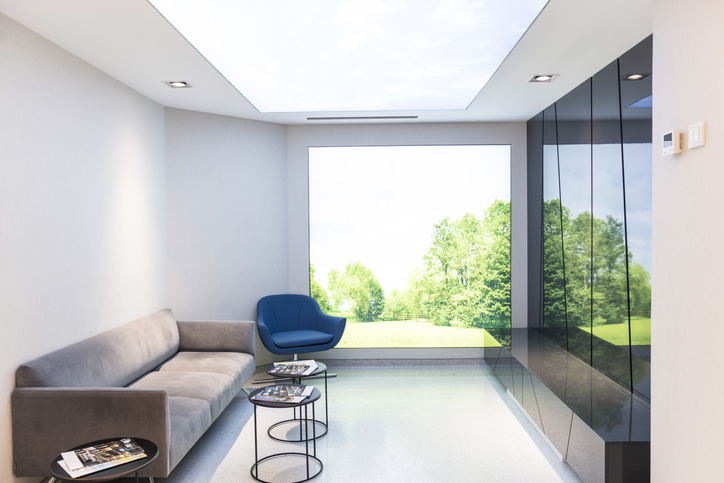Dermapen has been attracting attention as a cosmetic treatment that is expected to be effective in improving blemishes and regenerating skin. However, in fact, its effectiveness is not applicable to all blemishes. Especially for melasma, there is a risk of worsening the condition if the appropriate treatment is not chosen. Here, we will thoroughly explain why dermapen is dangerous for melasma and its effective alternative treatments. Please use this information as a reference to properly understand the relationship between melasma and dermapen and to choose the most appropriate treatment method.

Graduated from the Faculty of Medicine, National Kumamoto University. After serving as the director of major beauty clinics in Japan, etc., he opened Aladdin Aesthetic Clinic in 2023. He is a professional in aesthetic medicine with a doctorate in anti-aging research and many years of experience. With the motto of "Toward the realization of cosmetic medicine without lies," he aims to be the "Only One" together with his patients.
Basic Mechanism and Treatment Details of Dermapen

Dermapen is a cosmetic medical procedure that enhances the skin's ability to regenerate itself by inserting microscopic needles into the skin. A pen-shaped medical device is fitted with numerous ultrafine needles, which cause microscopic wounds on the skin's surface, thereby stimulating the production of collagen and elastin. This process is called "micro needling," and is expected to restore skin firmness and elasticity and improve blemishes, dullness, and fine lines and wrinkles.
Dermapen also helps normalize skin turnover. By accelerating turnover, melanin pigments are expelled smoothly, leading to the reduction of spots and dullness. Furthermore, by introducing beauty ingredients during the treatment, their absorption rate is increased, enabling more effective skin care.
The procedure takes a relatively short time and requires little downtime, making it popular with many people. It is also possible to introduce beauty ingredients such as growth factors and vitamin C at the same time to further enhance the effects of the treatment.
Dermapen NG for melasma treatment, what is the difference between other spots and why is it NG?

There are many different types of blemishes, but melasma is the most common type that requires special attention. Melasma is characterized by symmetrical light brown spots appearing on the cheekbones, forehead, and lower nose of the face. The main causes are hormonal imbalance, ultraviolet rays, and stress, and are most common among women in their 30s to 50s.
On the other hand, other common spots, such as senile pigmentation and post-inflammatory hyperpigmentation, are caused locally by UV light or skin irritation. While these spots can be improved with laser treatment or dermapen, melasma is very sensitive to irritation and can be reversed with the same methods.
Why is a dermapen not suitable for melasma?
Melasma exists in the deeper layers of the skin and is characterized by hypersensitivity to irritation. Dermapen is a procedure that causes minute scars on the skin to promote regeneration, but these "scars" can be a major irritant for melasma and risk aggravating its symptoms. Specific risks include the following
Aggravation of inflammation: Microinjury to the melasma area can lead to an inflammatory reaction.
Increased pigmentation: Inflammation stimulates melanin production, which may lead to darker spots.
Spread of symptoms: There is a possible risk of melasma spreading to the entire face.
Therefore, dermapen is not suitable for the treatment of melasma. Oral and topical medications that can treat melasma without irritation, or laser treatment specifically for melasma, are considered effective. Professional diagnosis and selection of appropriate treatment are important.
If the dermapen doesn't work! What are the treatments for melasma?

The treatment of melasma requires methods that are effective while minimizing irritation. The following are melasma treatments other than dermapen that are considered effective.
Effective Treatment Method 1|Laser Toning
Laser toning is one of the very effective laser treatments in the treatment of melasma. In this method, a low-power laser is applied evenly to the skin to gradually reduce melanin, thereby improving melasma. Conventional laser treatments destroy melanin at high power, which in turn risks aggravating melasma. However, laser toning does not cause strong irritation to the skin, so the treatment can be performed safely while preventing melasma from worsening.
This procedure is characterized by its hypoallergenic nature and short downtime. It is favored by many because it causes little redness or swelling after the procedure and does not interfere with daily life. In addition, by gradually reducing melanin, the overall skin tone is brightened and clarified.
The procedure usually begins with a consultation with the doctor, who will check the skin condition and then set the optimal laser. There is little to no pain during the procedure, only a mild feeling of warmth. Four to six treatments are generally required to realize the full effect of the treatment, which should be performed continuously every two weeks to a month.
Effective Treatment 2|Introduction of Whitening Ingredients
Introduction of whitening ingredients is a method to improve melasma by directly penetrating highly effective whitening ingredients into the skin, thereby inhibiting melanin production. Vitamin C derivatives and tranexamic acid are mainly used, and these ingredients are delivered deep into the skin using techniques such as ion implantation and ultrasonic introduction.
Ion delivery uses a weak electric current to penetrate ionized whitening ingredients into the skin. It is less stressful on the skin and increases the absorption rate of the ingredients, making it an effective treatment. On the other hand, ultrasonic induction uses ultrasonic vibrations to expand the space between cells, allowing whitening ingredients to efficiently penetrate the skin. This also produces a massaging effect on the skin, which can be expected to promote blood circulation and lift the skin.
These procedures are less irritating and have a low risk of side effects, so even those with sensitive skin or melasma can undergo them with peace of mind. In some cases, brightness and transparency of the skin can be felt immediately after the treatment, and synergistic effects can be expected when combined with other treatments. However, it is important to thoroughly protect the skin from UV rays and moisturize after the treatment, which will maximize the effects of the treatment and prevent skin problems.
Effective Treatment 3|Use of oral medication
Treatment with oral medication is a method of approaching the cause of melasma from the inside of the body, and oral tranexamic acid is particularly effective. Tranexamic acid suppresses the action of a substance called plasmin, which promotes melanin production, and prevents excessive melanin production, thereby improving melasma.
Usually about 750 mg to 1,500 mg per day, divided into several doses, under the guidance of a physician. Although individual results may vary, the effects can often be felt within one to three months. In addition, by combining vitamin C, L-cysteine, and other supplements, antioxidant and melanin-reducing effects can be expected and higher effects can be aimed for.
The advantages of oral medication are that it can be continued easily at home and that it can suppress melanin production systemically. However, in rare cases, side effects such as stomach discomfort and loss of appetite may occur, so it is important to safely proceed with treatment while following the doctor's instructions and visiting the doctor regularly. In addition, those who are pregnant, nursing, or have a history of thrombosis should avoid taking the drug and should always consult their physician.
Effective Treatment 4|Potenza
In recent years, the latest cosmetic medical device called "Potenza" has been attracting attention in the treatment of melasma.Potenza is a treatment that combines ultra-fine needles and radiofrequency (RF) energy to promote skin regeneration. The needle length and power output can be finely adjusted, allowing for effective treatment while minimizing skin irritation.
The first reason why Potenza is suitable for melasma is that it is a hypoallergenic treatment. Since melasma is sensitive to irritation, Potenza is very suitable for it because the stimulation during treatment can be finely controlled. The use of radiofrequency energy allows for effective treatment while minimizing the burden on the skin.
In addition, Potenza is also effective in inhibiting melanin. Radiofrequency energy inhibits melanin production, which can improve melasma. This action not only fades existing spots, but also prevents the development of new ones.
Potenza also contributes to the promotion of collagen production. By activating collagen production inside the skin, the skin regains its firmness and elasticity, resulting in an overall skin beautification effect. This can be expected to improve not only melasma, but also fine lines and wrinkles and sagging skin that become a concern with age.
However, it is important to note that Potenza is a highly technical procedure, so it is important to undergo it under the supervision of an experienced physician or specialist. The effectiveness of the procedure varies depending on the individual's skin type and melasma condition, so the key to success is to undergo a thorough consultation beforehand to establish an appropriate treatment plan. Through consultation with a specialist, you will find the best treatment option for you.
What are the aftercare methods and precautions for melasma?

After treatment for melasma, the most important factor is UV protection and proper aftercare. Ultraviolet rays promote melanin production and are a major factor in the recurrence or worsening of melasma. Therefore, daily UV protection is essential to maximize the effects of treatment and prevent the recurrence of melasma.
Key Points of UV Protection
UV protection is very important in the prevention and improvement of melasma. First, the use of sunscreen is essential: choose a sunscreen with SPF 30 or higher and PA+++ or higher and apply it thoroughly before going outside. It is recommended to reapply every 2 to 3 hours to maintain its effectiveness.
Physical blockade is another effective method. Hats, parasols, and sunglasses can be utilized to prevent direct UV exposure. Especially during the hours of 10:00 a.m. to 2:00 p.m., when UV rays are particularly strong, avoid going outside as much as possible or use these items to protect your skin.
In addition, covering the skin with clothing is also effective. Covering the skin with long-sleeved clothing or a light scarf can protect the skin from UV rays. A combination of these measures can minimize damage from UV rays and prevent melasma from worsening.
Importance of aftercare
After treatment, the skin is in a delicate state and requires proper aftercare. First, moisturize thoroughly. To improve the skin's barrier function, it is recommended to use skincare products with a high moisturizing effect that contain ceramide and hyaluronic acid.
| point | Details |
|---|---|
| Review of face wash | Do not scrub hard,Wash face gently with lather.Doing so will Moisturize immediately after cleansing to prevent skin from drying out. |
| Use of whitening cosmetics | By incorporating cosmetics containing whitening ingredients that inhibit melanin production (e.g., albutin and vitamin C derivatives), melasma can be prevented and improved. |
| Excessive massage is not acceptable. | Because melasma is sensitive to friction and irritation,Excessive massage or estheticsIt is best to avoid such things as |
In addition, choose hypoallergenic products that do not contain alcohol, fragrance, or coloring agents, and use a non-irritating skin care regimen. It is important to avoid excessive cleansing and peeling to reduce the burden on the skin.
Lifestyle and daily care tips
In addition to treatment, daily care has a significant impact on the improvement of melasma. To prevent melasma from worsening, the first step is to reduce stress. Stress can disturb the hormonal balance and cause melasma, so it is important to relax by setting aside time for moderate exercise and hobbies.
Next, maintain a regular rhythm of life. Lack of sleep and irregular lifestyle can disrupt skin turnover and worsen melasma. Going to bed and waking up at the same time every day and getting 7 to 8 hours of quality sleep will keep your skin healthy.
A nutritionally balanced diet also helps improve melasma. Nutrients such as vitamin C, vitamin E, and zinc are effective in inhibiting melanin production and maintaining skin health. Consume fresh vegetables, fruits, and seafood.
It is also important to avoid alcohol and smoking. Excessive alcohol consumption and smoking lead to poor blood circulation and an increase in active oxygen species, which accelerate skin aging. It is advisable to review these habits to improve melasma.
summary
Dermapen is an effective treatment for spots, but it is not suitable for melasma, so careful judgment is required. It may be dangerous to perform the treatment outside of a hospital because it is an easy spot treatment. By receiving a diagnosis from a specialist and selecting the most appropriate treatment for melasma, effective treatment is possible while preventing the symptoms from worsening.
In addition, thorough UV protection and appropriate aftercare can prevent skin problems and maintain beautiful skin. Since melasma has different characteristics from other blemishes, its treatment requires specialized knowledge and experience. It is important to avoid treatment based on one's own judgment and to consult with a reliable medical institution. With correct information and proper care, you can eliminate the problems of melasma.
At Aladdin Aesthetic Clinic, based on our many years of experience in cosmetic medicine and cosmetic dermatology and the knowledge of our doctoral degree, we provide counseling that aims to be "only one", offering the best treatment for each person we meet. We offer only the necessary treatments without any unnecessary information or suggestions.
Feel free to use our official LINE account for 24-hour counseling and reservations. Please feel free to contact us for free counseling for the first time or if you have any concerns.






